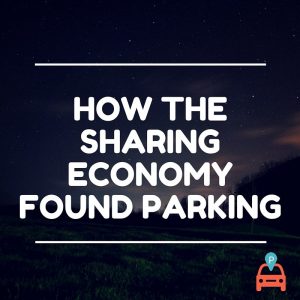If you had to choose to between paying full price for a product or to paying less for a similar product rented from a stranger on the Internet, which would you take? That’s the concept driving the push for the sharing economy.
The sharing economy includes services like Airbnb, Uber, and Lyft, and is turning many traditional industries on their heads. In New York City, the value of taxi medallions are dropping rapidly and taxi owners are protesting Uber’s growing market. The impact Uber and its competitor, Lyft, have are so big that the city is launching a rival app called Arro that functions similar to popular ride sharing apps only it’s strictly for NYC taxi cabs.
Taxi alternatives aren’t the only businesses disrupting traditional industries with the sharing economy. Airbnb is another key player in the “gig economy.” Airbnb is a rapidly growing service that turns spare bedrooms into hotel rooms. The service is so popular it just received $1.5 billion in funding to pursue growth in China.
What is driving the growth behind the sharing economy? Despite being around for several years now, websites like TaskRabbit and Elance haven’t seen nearly the growth that services like Uber and Airbnb are experiencing now. One explanation for why these services are so popular is their ability to rent out items that would otherwise go unused. It’s a passive way to make extra money.
Businesses in the sharing economy space seem to be catering to the college-aged crowd. Who other than a millennial would be willing to jump in a car with a stranger and stay overnight in another stranger’s spare room? Using the sharing economy is becoming part of everyday life for college students.
Another way college students are capitalizing on the sharing economy is with parking spaces. In Chicago, where some parking spots have a monthly rate similar to that of a small studio apartment, Parqex is making a big splash.
For owners, the app allows people with spare parking spaces the opportunity to make money with their unused spaces. The renting process is fairly quick and simple. Users enter the address of the available spot, upload a picture or two of the space, choose availability times, and then set the rate. Parqex’s system is flexible enough to allow people who commute away from the city during the day to rent out their spots to students who coming in to the city.
For renters, commuting to the colleges and universities can be a hassle but finding a parking spot just got easier. After you download the app, enter the address of your school to find which parking spots are available nearby. The app is also flexible for people looking to rent. Rather than committing to a parking spot for a month at a time, Parqex lets you rent the spot only for the time you need. It’s similar to paying for metered parking spot only now you know the spot will be there.
Sharing parking spaces is a logical move for the sharing economy. Now, not only can Uber driving millennials rent out their spare room, they can also rent out their parking spot while they’re working.
One of the more interesting aspects of the sharing economy is how everyday people who drive for Uber and rent out with Airbnb find new ways to keep customer interested in their services. Uber drivers are known to offer bottled water, maybe a snack, and always the aux cord to their passengers. Some drivers even install fun lighting systems for the nighttime crowd. On Airbnb, people renting out their spare room will go to extra lengths to make sure the stay is comfortable. Airbnb rooms are often redecorated and furnished with wall art and mini fridges to attract visitors. Some Airbnb locations even offer free breakfast.
When this attitude and spunk reaches the parking space sharing economy, can we expect fancy parking spot lighting and windshield washer fluid top-offs? Who’s to say.
For more information about how Parqex works, contact us today.

